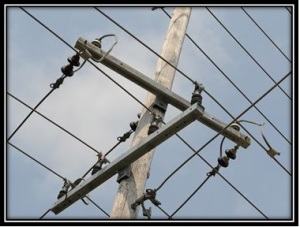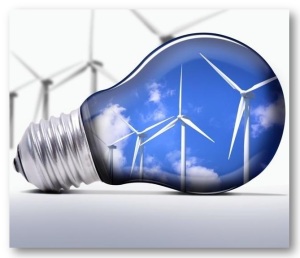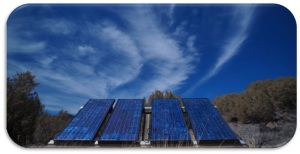
An employee holds a piece of coal in a storage yard at the Joban Joint Power Co. Nakoso coal-fired power station in Iwaki City, Fukushima Prefecture, Japan.
Prime Minister Shinzo Abe is pushing Japan’s coal industry to expand sales at home and abroad, undermining hopes among environmentalists that he’d use the Fukushima nuclear accident to switch the nation to renewables.
A new energy plan approved by Japan’s cabinet on April 11 designates coal an important long-term electricity source while falling short of setting specific targets for cleaner energy from wind, solar and geothermal. The policy also gives nuclear power the same prominence as coal in Japan’s energy strategy.
In many ways, utilities are already ahead of policy makers. With nuclear reactors idled for safety checks, Japan’s 10 power companies consumed 5.66 million metric tons of coal in January, a record for the month and 12 percent more than a year ago, according to industry figures.
“You cannot exclude coal when you think about the best energy mix for Japan to keep energy costs stable,” said Naoya Domoto, president of energy and plant operations at IHI Corp., a developer of a technology known as A-USC that burns coal to produce a higher temperature steam. “One way to do that is to use coal efficiently.”
Japan’s appetite for coal mirrors trends in Europe and the U.S., where the push for cheaper electricity is undermining rules limiting fossil fuel emissions and supporting cleaner energy. In the U.S., a frigid winter boosted natural gas prices, providing catalyst for utilities to extend the lives of dirtier coal plants. Germany, Spain and Britain are slashing subsidies for renewables to rein in the cost of electricity.

An employee walks in a coal storage yard at the Joban Joint Power Co. Nakoso coal-fired power station in Iwaki City, Fukushima Prefecture, Japan.
Mixed Bag
For renewable energy environmental groups, Japan’s policy is a mixed bag offers little in the way of policy direction. Instead, it backs the status quo, calling for reactors shut after the 2011 disaster to be restarted while offering no targets for the amount of power coming from wind and solar.
“What had been expected of the basic plan was to present a major policy to switch from nuclear power,” the Japan Renewable Energy Foundation said in a statement. “But the basic plan shows that the government has given up fulfilling that role. The plan does not promote a shift from old energy policies.”
WWF Japan urged the government to set a target to promote clean energy as soon as possible.
“The energy plan failed to present the spirit of innovation,” the conservation group said in a statement April 11. “Japan basically needs to recognize an increase in coal use is a serious issue for climate change. The country needs to push for reduction of carbon dioxide.”

The Joban Joint Power Co. Nakoso coal-fired power station stands illuminated at night in Iwaki City, Fukushima Prefecture, Japan.
Fossil Fuels
In calling for technology to be used to soften coal’s environmental impact, the plan acknowledges that traditional fossil fuels pollute more and carry higher costs.
Before the accident, Japan got 62 percent of its electricity from fossil fuels, and nuclear made up about a third, according to government figures. Since then, utilities reverted to fossil fuels such as liquefied natural gas and coal to replace nuclear capacity taken offline. Those thermal power sources generated about 90 percent of Japan’s electricity in fiscal 2012, according to figures in the energy plan.
Buying more fossil fuels comes at a cost. The resource-poor nation has run 20 consecutive months of trade deficits and last year backtracked on promises to cut greenhouse gas emissions. That jarred United Nations talks involving 190 nations discussing ways to limit global warming.
Export Hopes
“It’s crucial to have diverse energy sources for a country like Japan, which relies on imports for all energy,” said Akira Yasui, an official in charge of coal policy at the Ministry of the Economy, Trade and Industry. “Our basic stance is to use coal while caring for the environment as much as possible. Coal is economical and stable in supply.”
Abe’s government is supporting the development and export of advanced coal technology from Japan. According to a growth strategy released in June by the prime minister, the nation intends during the 2020s to commercialize A-USC technology. It’s also seeking to sell a equipment that combines fuel cells with a process called integrated gasification combined cycle to improve the efficiency of power generation.
“By applying Japan’s most advanced coal technology, the U.S., China and India can reduce a combined 1.5 billion tons of carbon dioxide emissions per year,” far above Japan’s total emissions, Toshimitsu Motegi, Japan’s trade minister, told parliament in February.
Fukushima Disaster
Japan’s interest in IGCC technology is on display at the Nakoso Power Station’s No. 10 coal power generator, about 60 kilometers (37 miles) south of the wrecked Fukushima nuclear plant. The unit, set up in 2007 to demonstrate the feasibility of the technology, can produce about a quarter of a typical nuclear reactor’s 1 gigawatt of electricity.
Had it not been for the Fukushima disaster three years ago, the generator would have been closed. Today, it’s up and working after repairs. The station, operated by a joint venture between Tokyo Electric Power (9501) Co. and Tohoku Electric Power (9506) Co., posted record output for the year ended March 31.
“This was a research generator,” Yoshitaka Ishibashi, associate director and executive general manager at the plant, said in an interview. “They’re usually dismantled once the study is over. But nuclear reactors were suspended, power supply was tight, and 250 megawatt is not a negligible capacity. So it was turned into a commercial one.”
More Coal
Tokyo Electric, better known as Tepco, has other plans to use more coal for the stations that serve 29 million customers around the nation’s capital.
The utility plans to add two more IGCC generators at the Nakoso station and at its Hirono plant, also in Fukushima. A more traditional 600-megawatt coal-fired generator at the Hirono site began operating in December.
Power generation costs from IGCC can eventually be reduced to conventional coal power generation levels at 9.5 yen (9 cents) per kilowatt hour, though that may not happen for 10 years to 15 years, said Ishibashi at the Nakoso power station.
“The plan represents nothing but anachronism,” said Mie Asaoka, head of the Kiko Network, a Kyoto, Japan-based environmental organization.



 For millennia, ginseng has been used as an herbal “remedy” believed to rejuvenate the body and mind, alleviate fatigue and stimulate cognition.
For millennia, ginseng has been used as an herbal “remedy” believed to rejuvenate the body and mind, alleviate fatigue and stimulate cognition.




